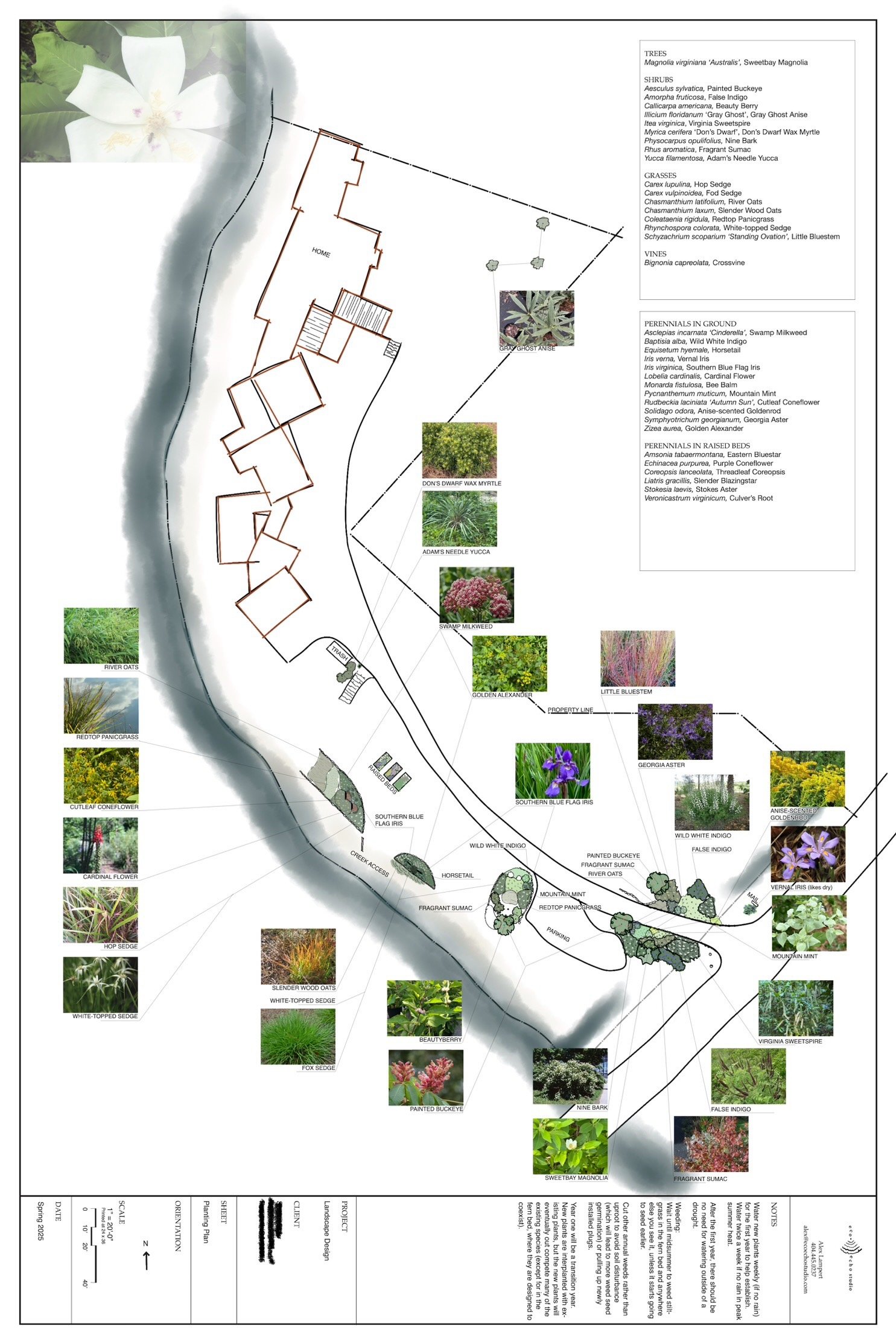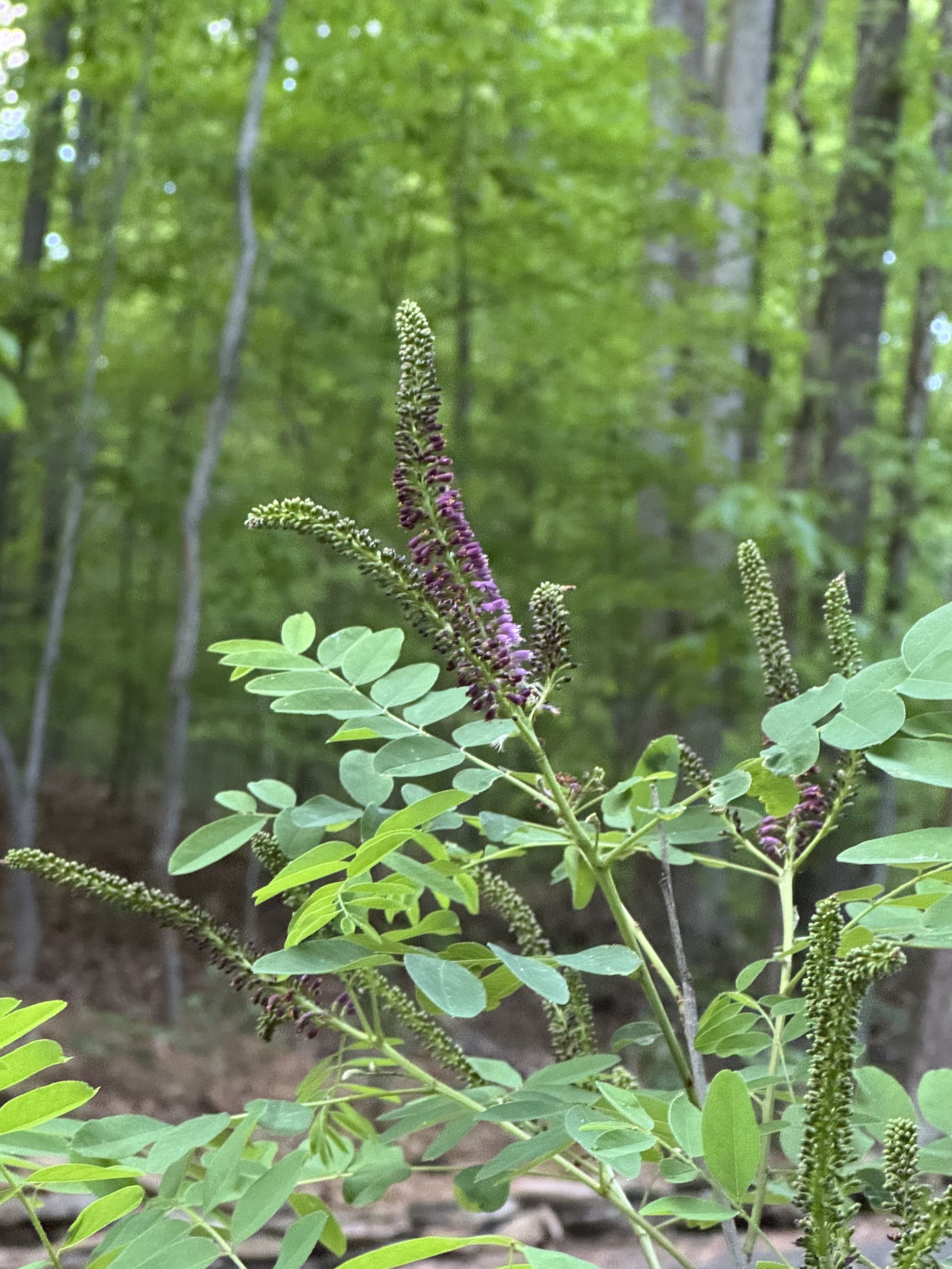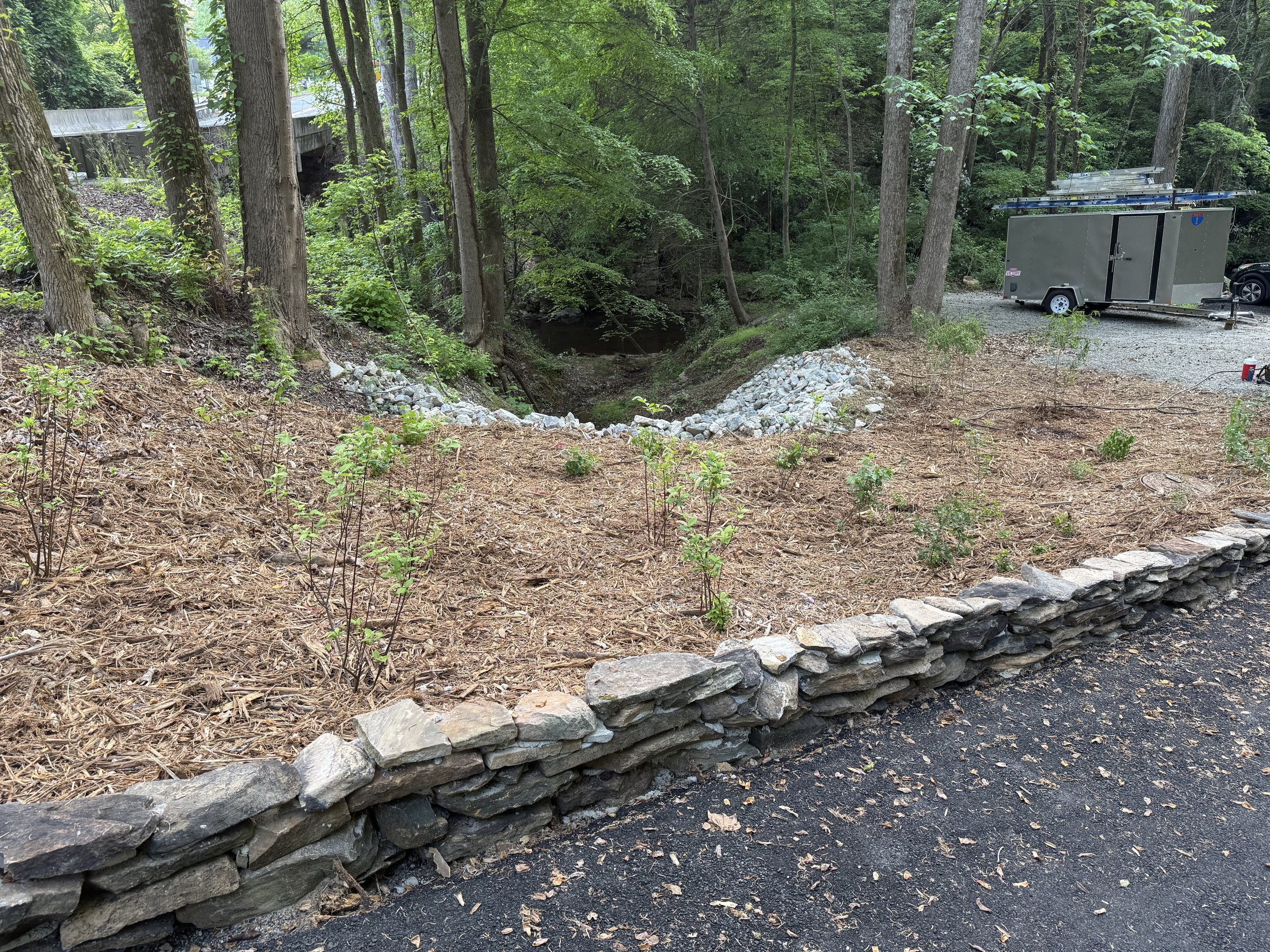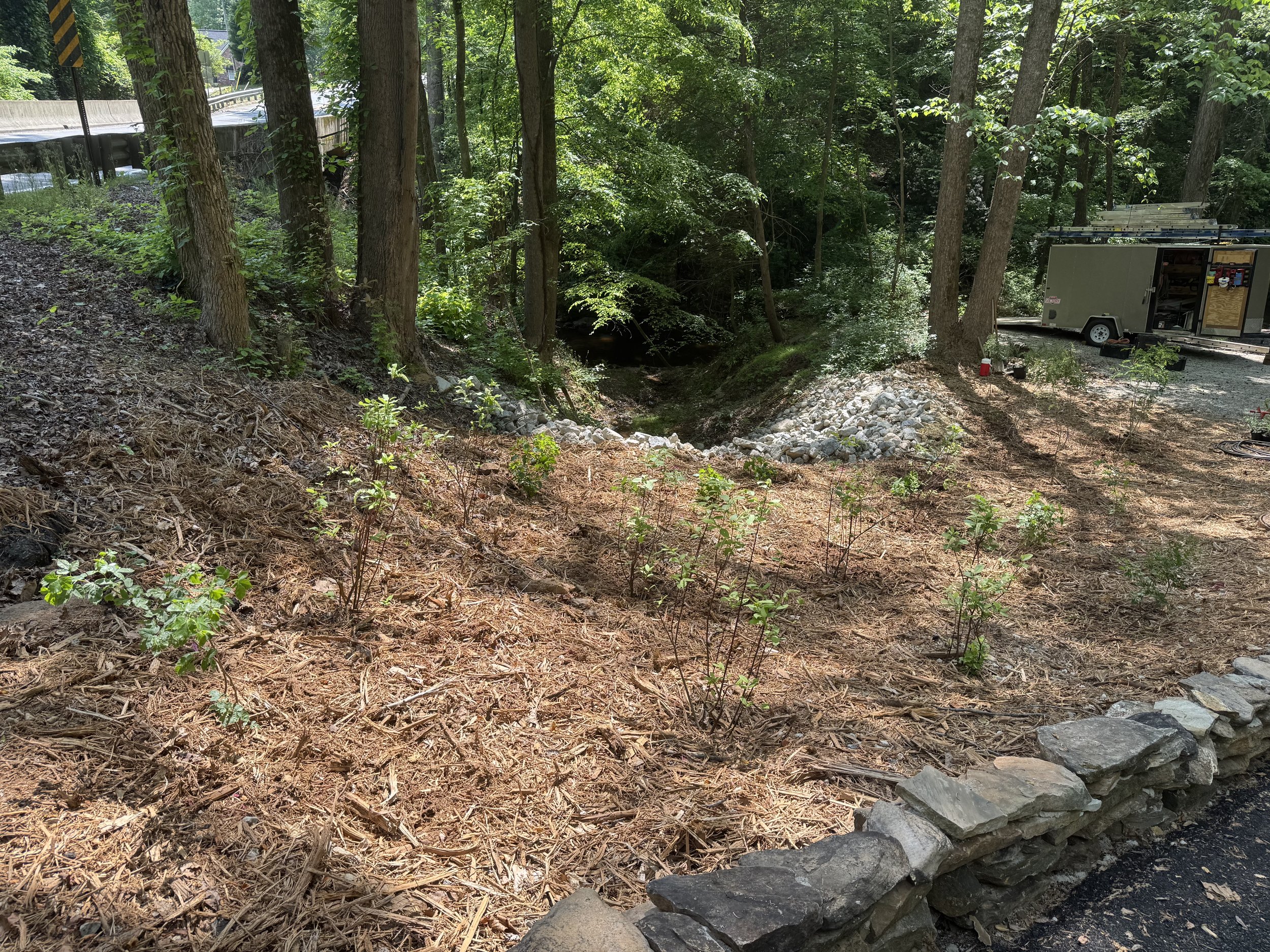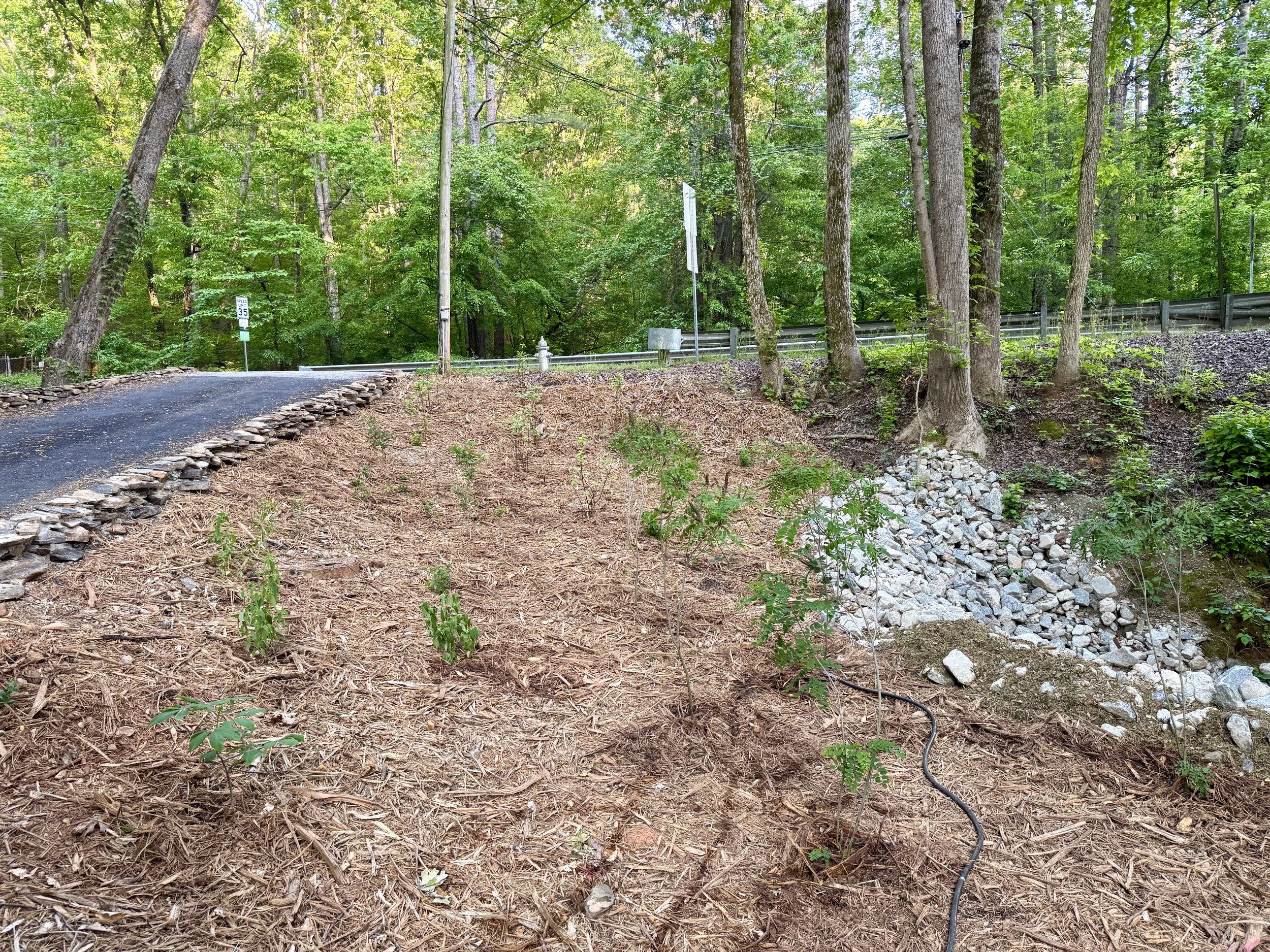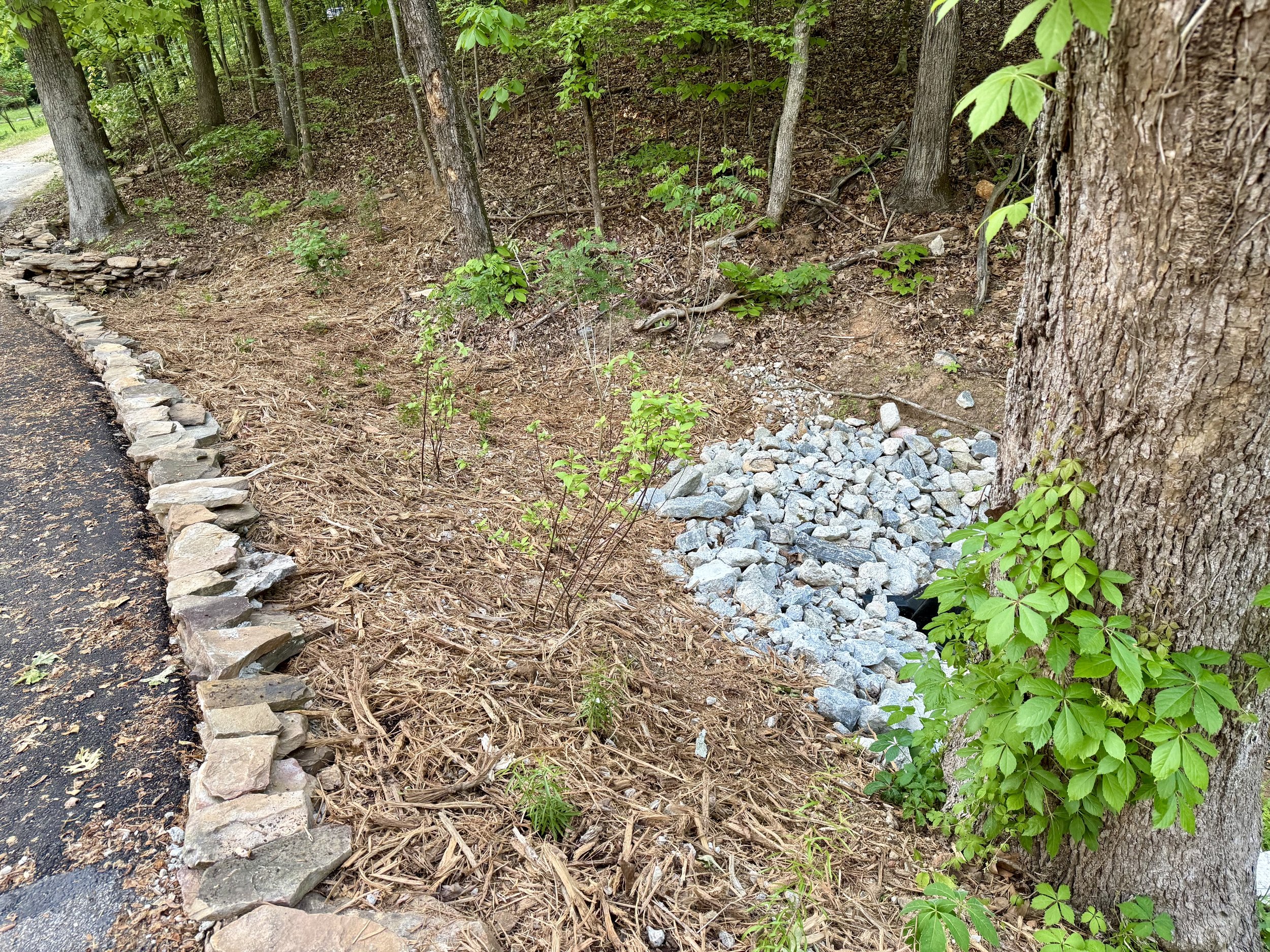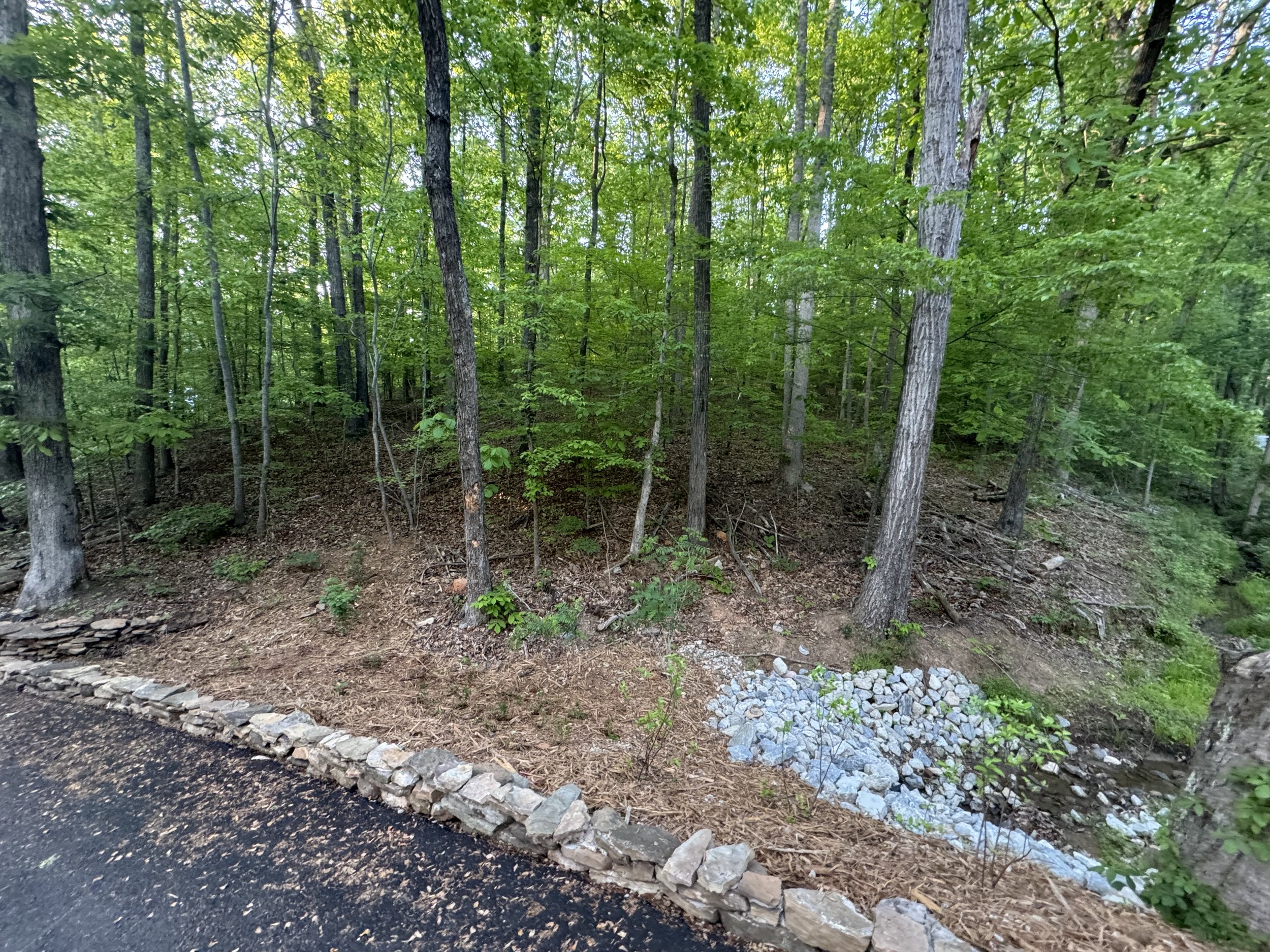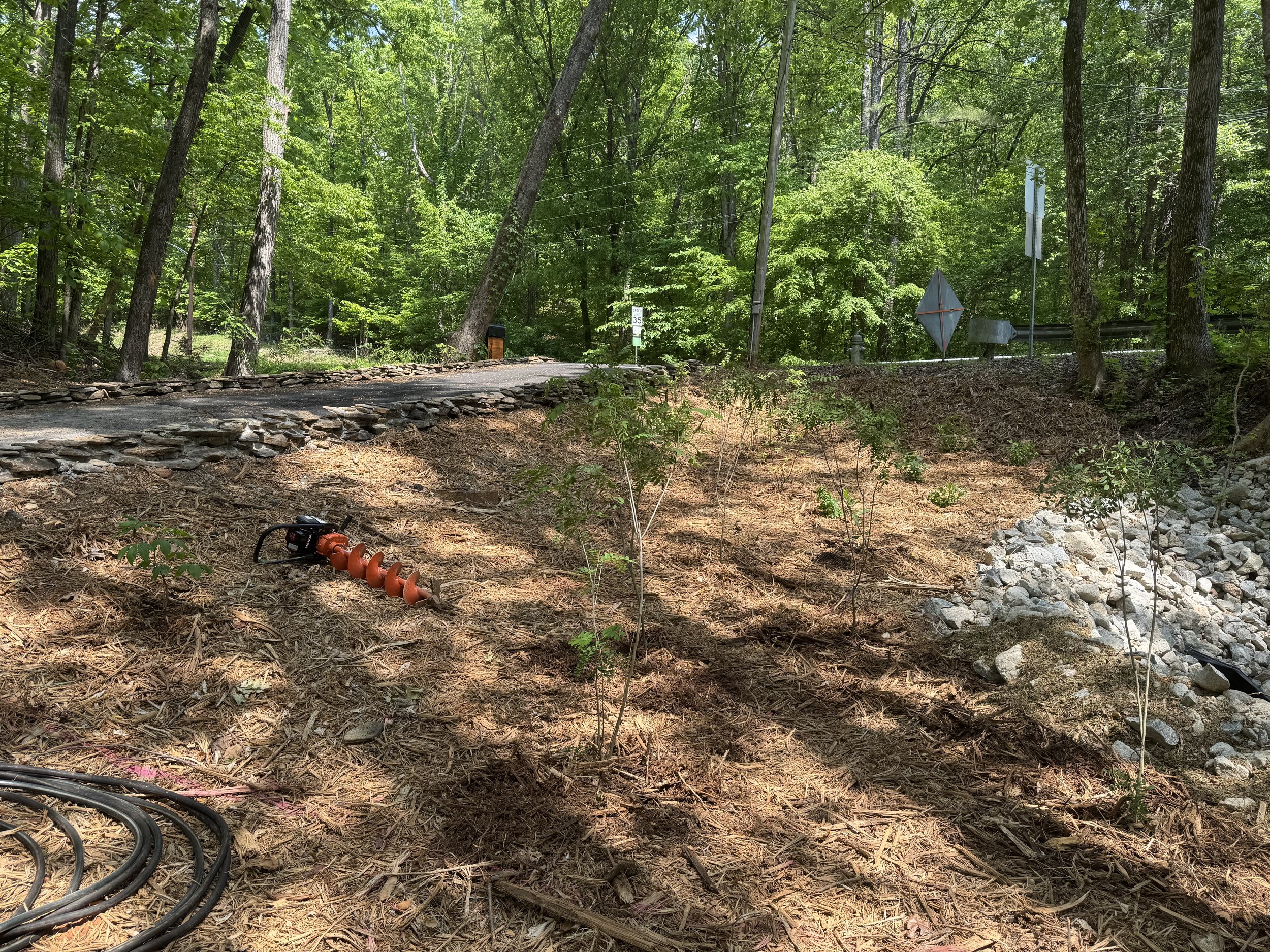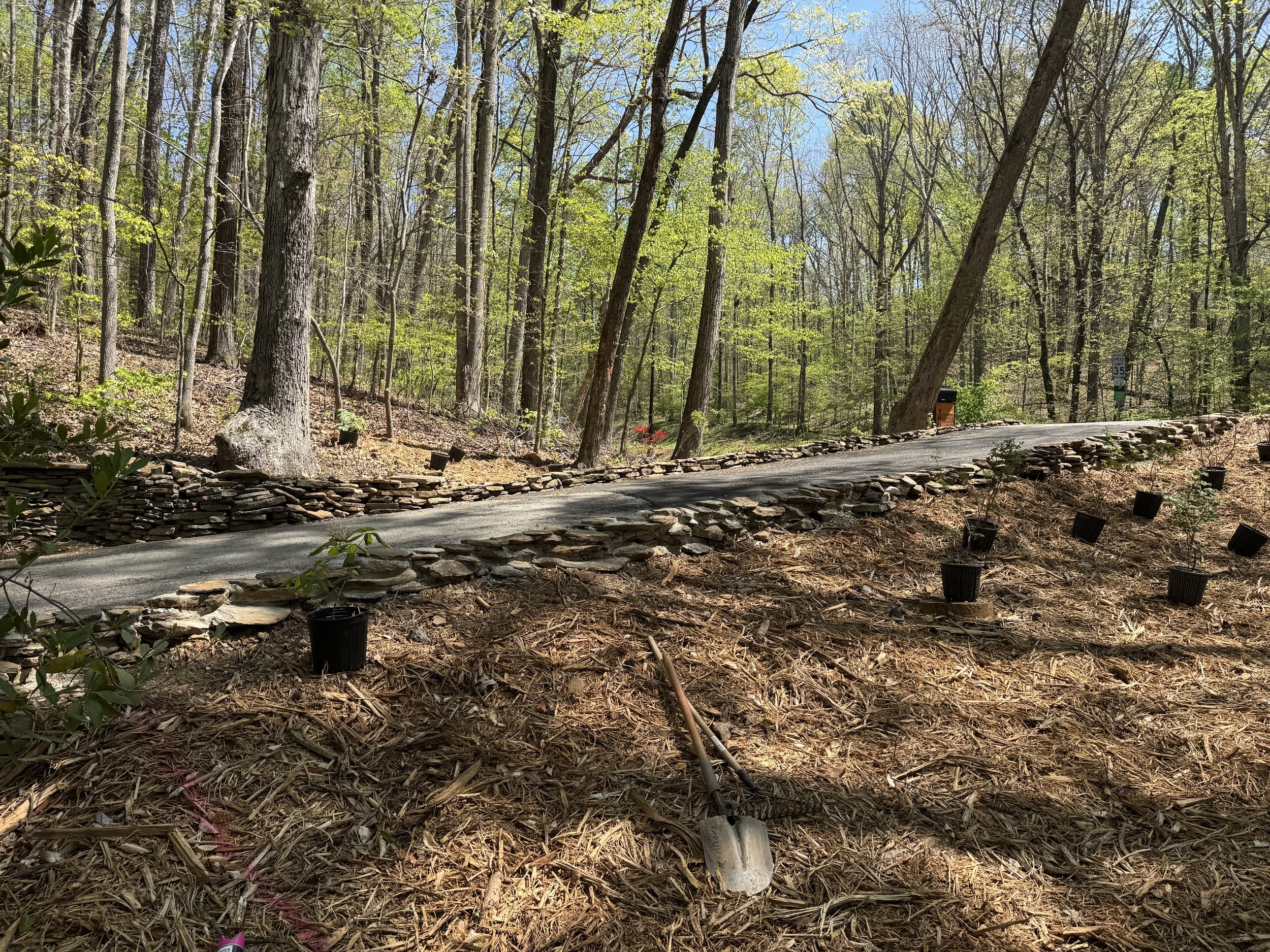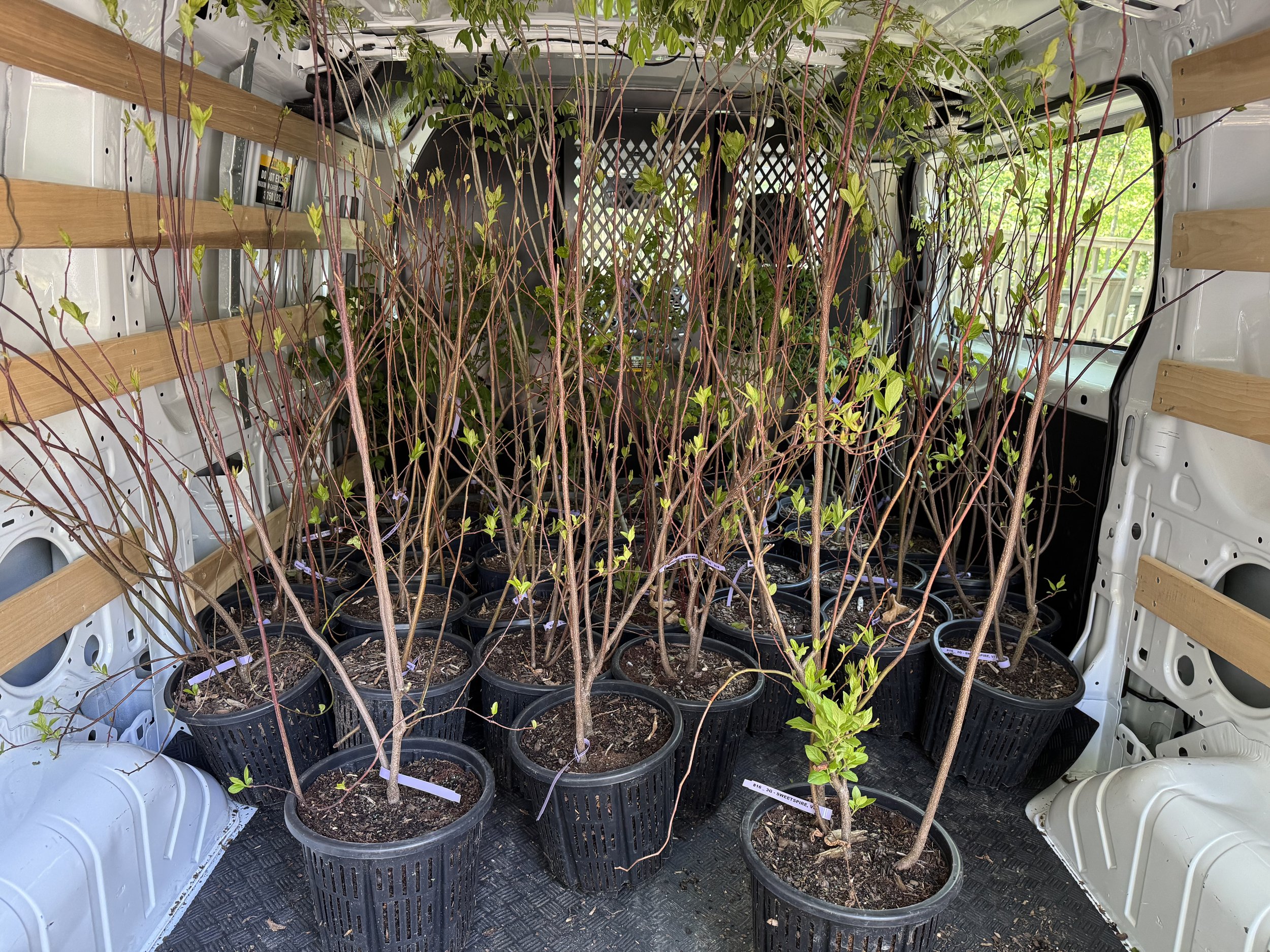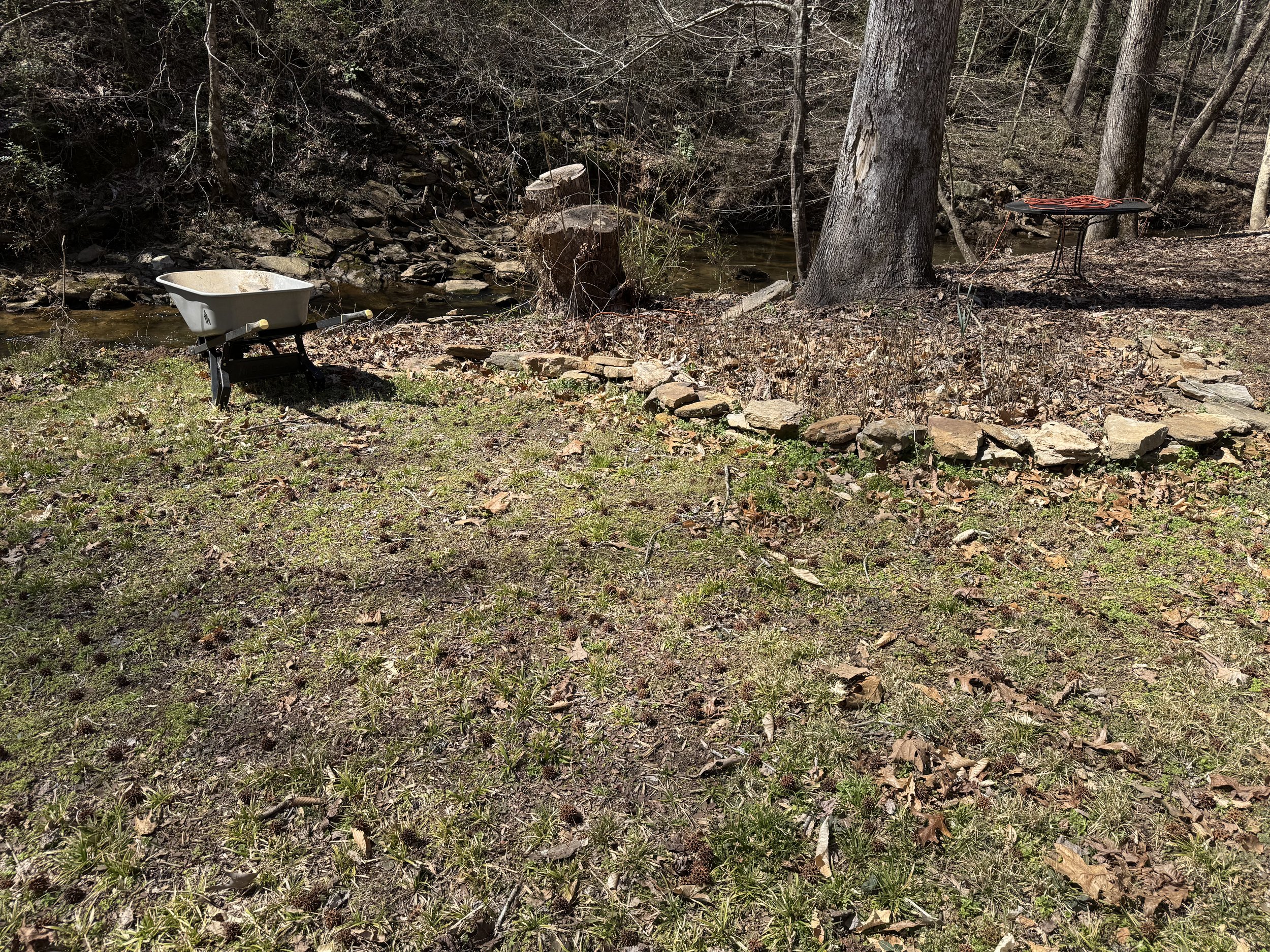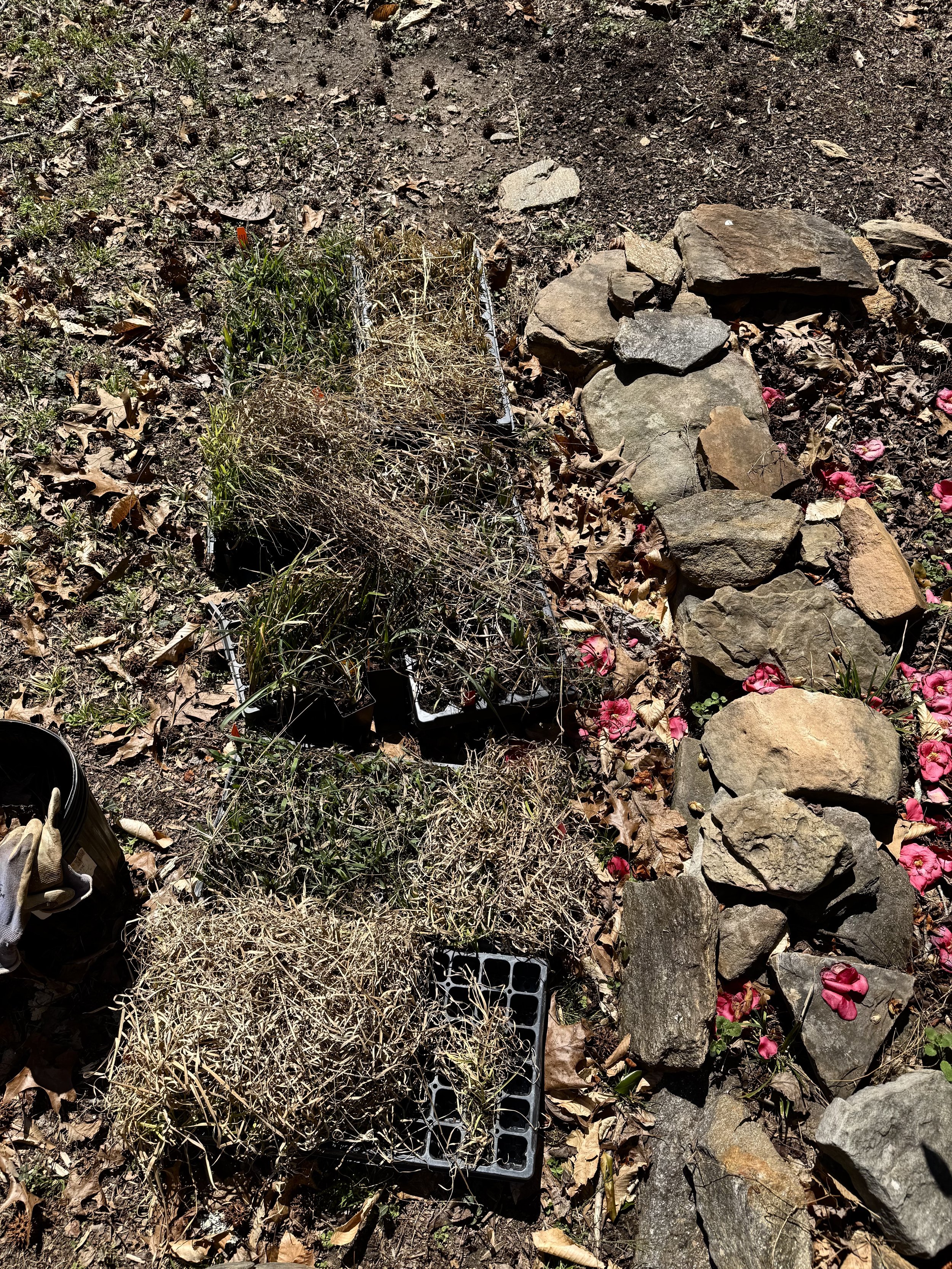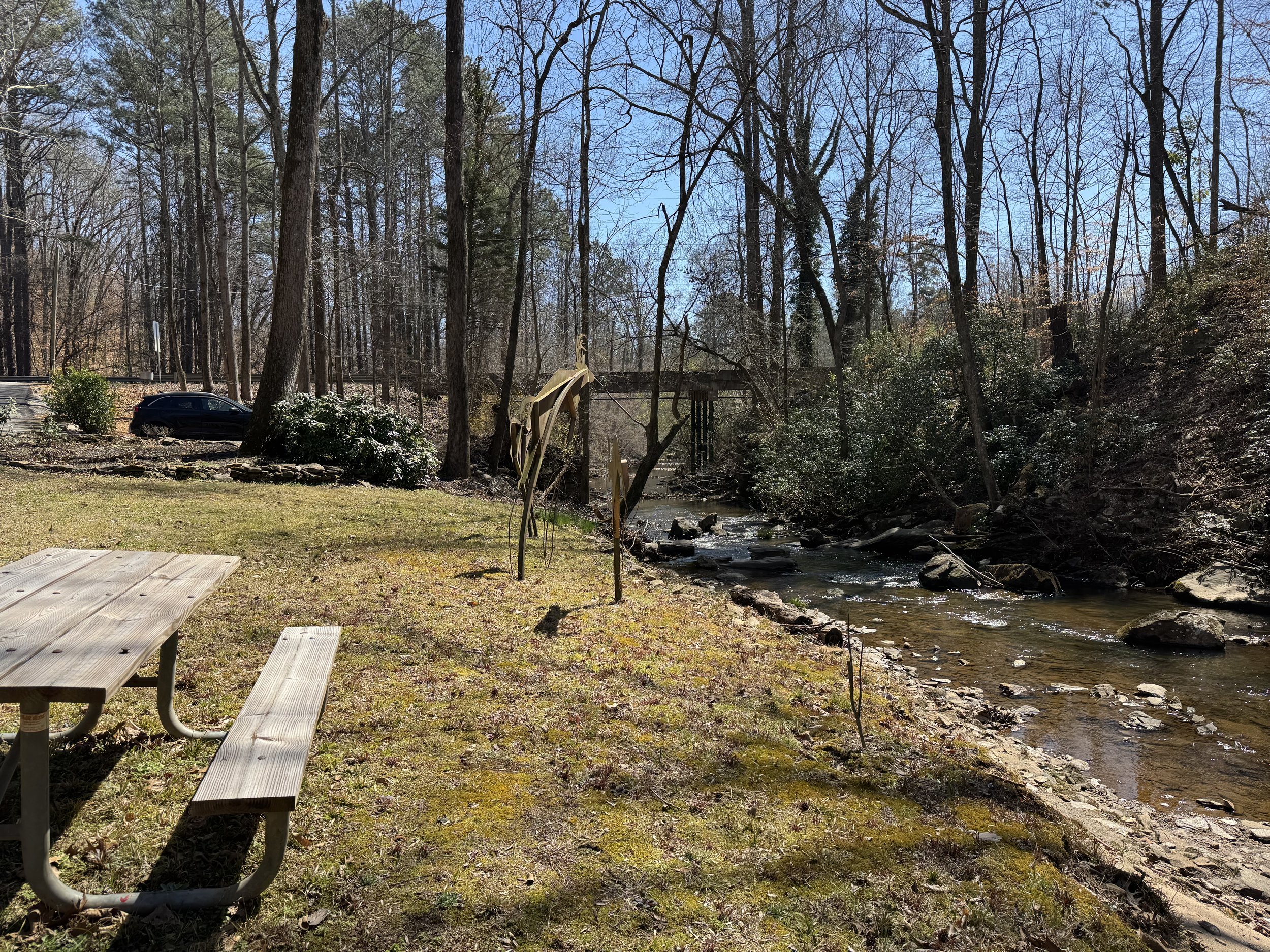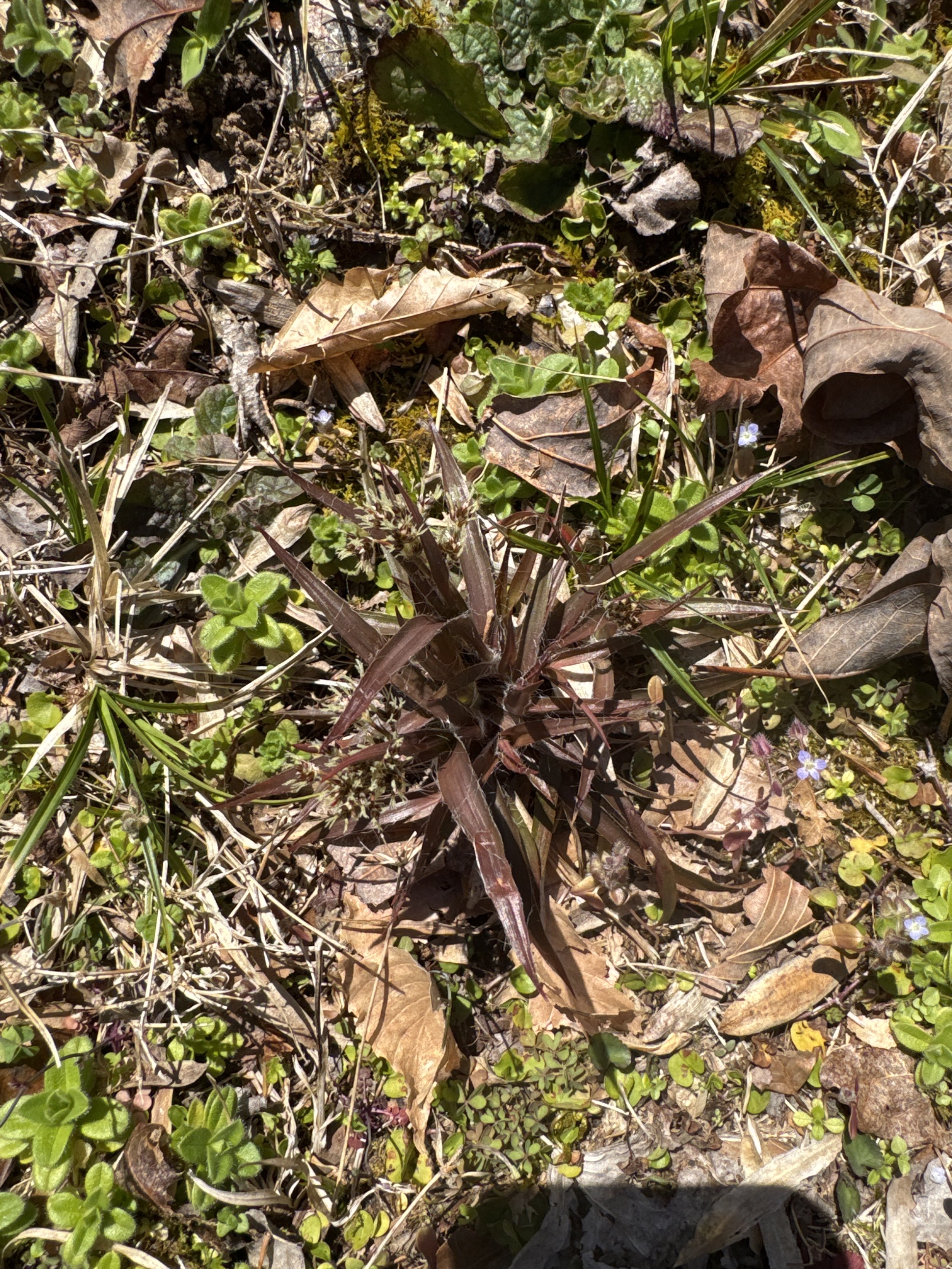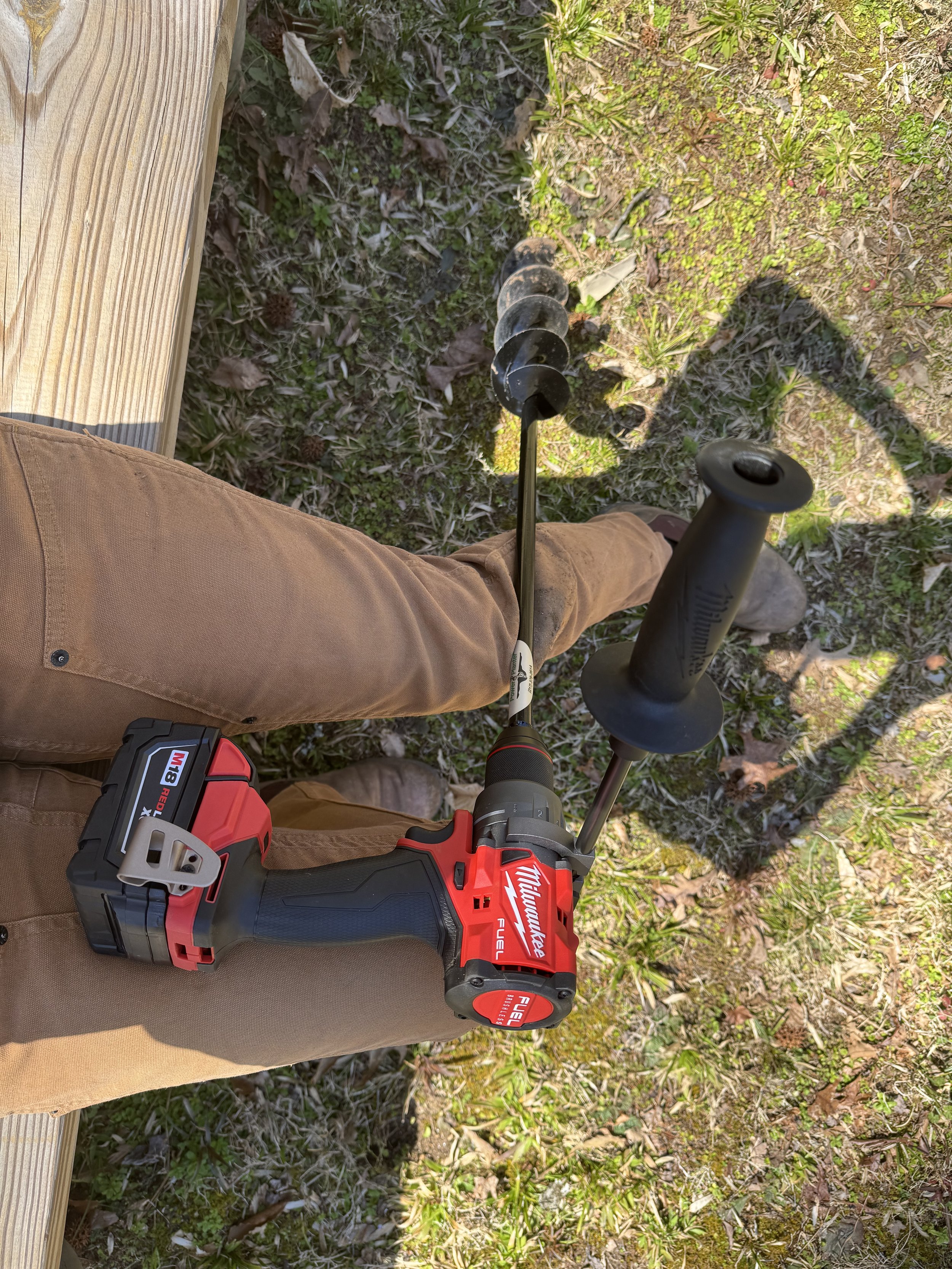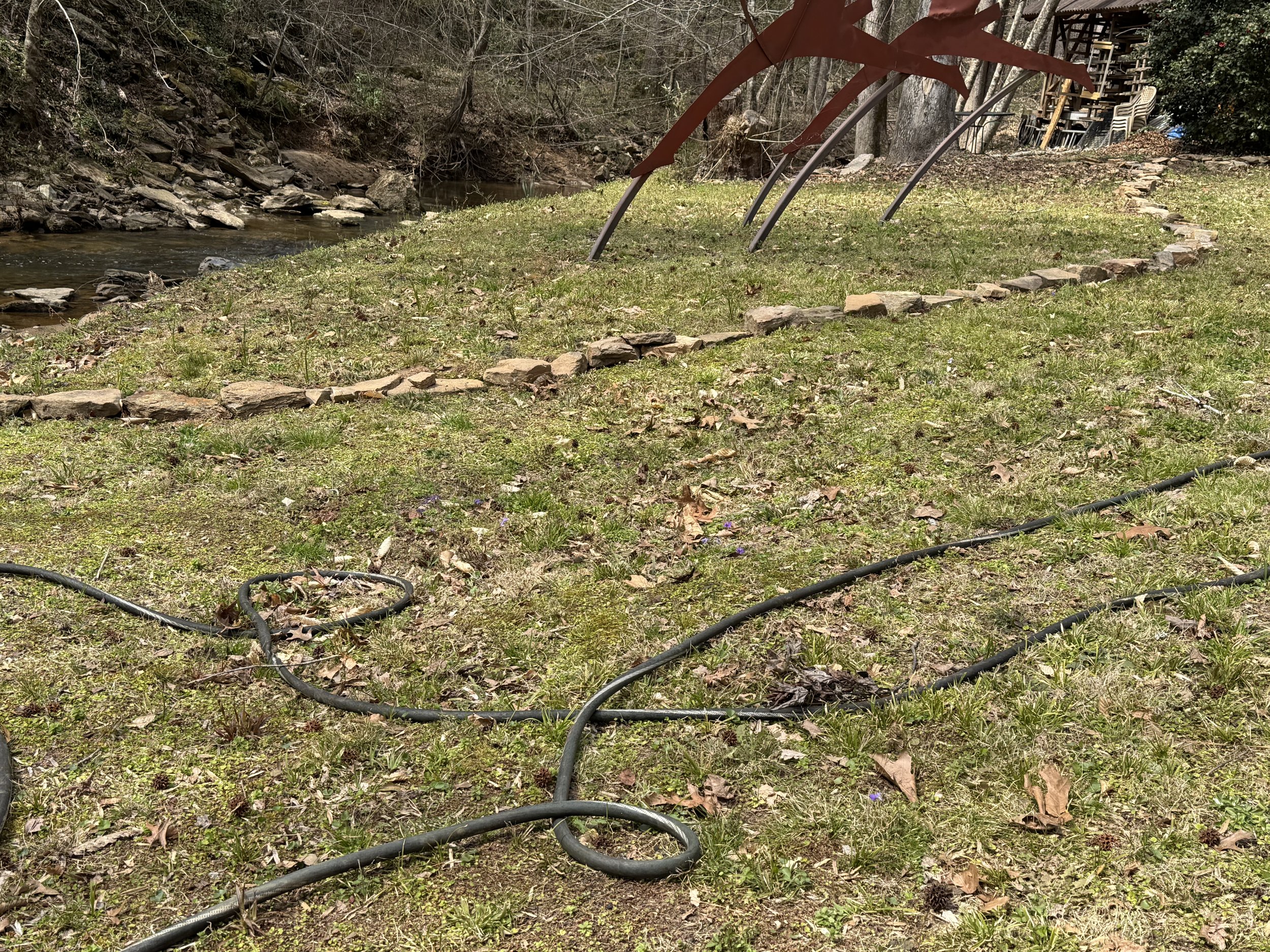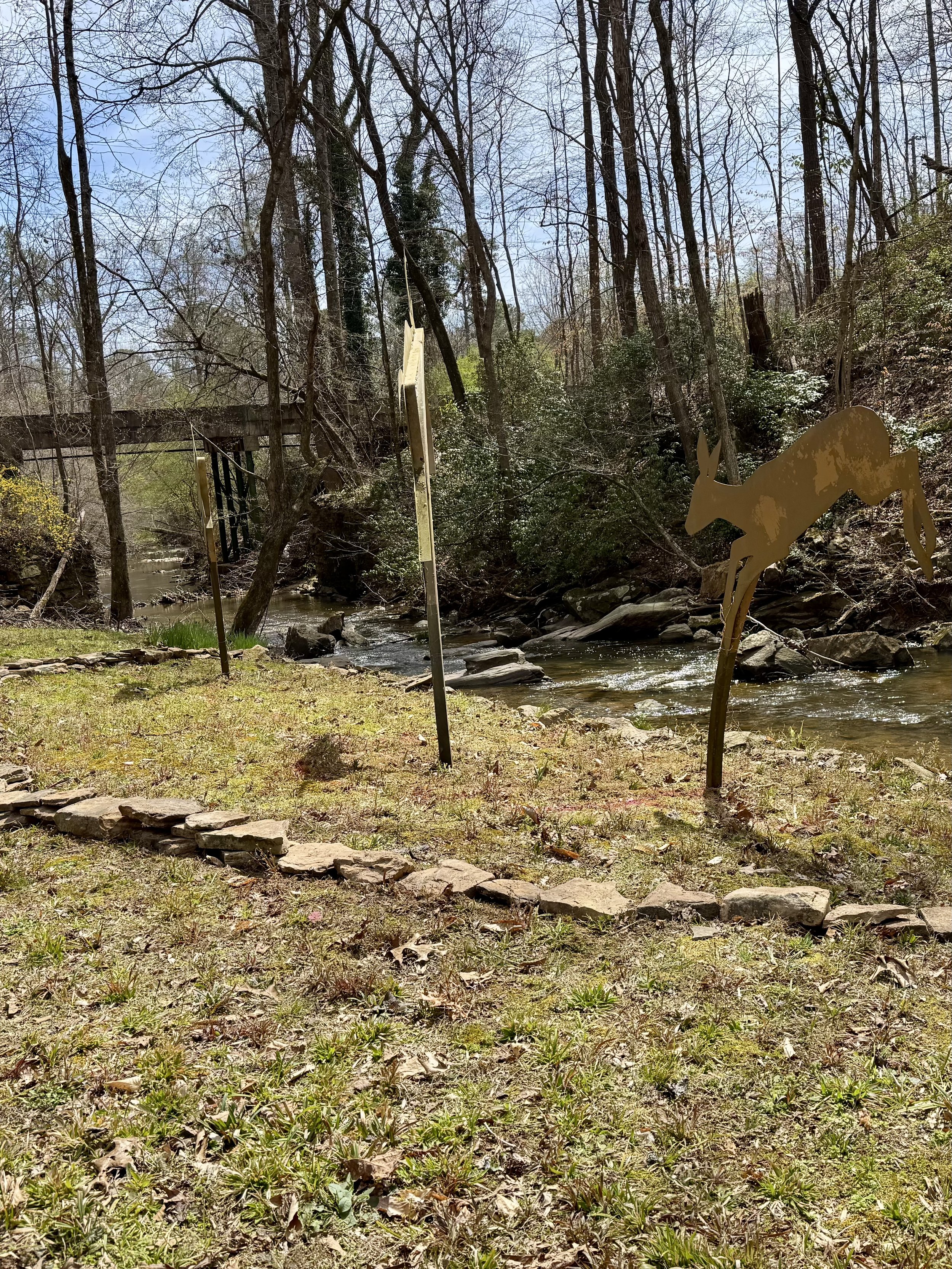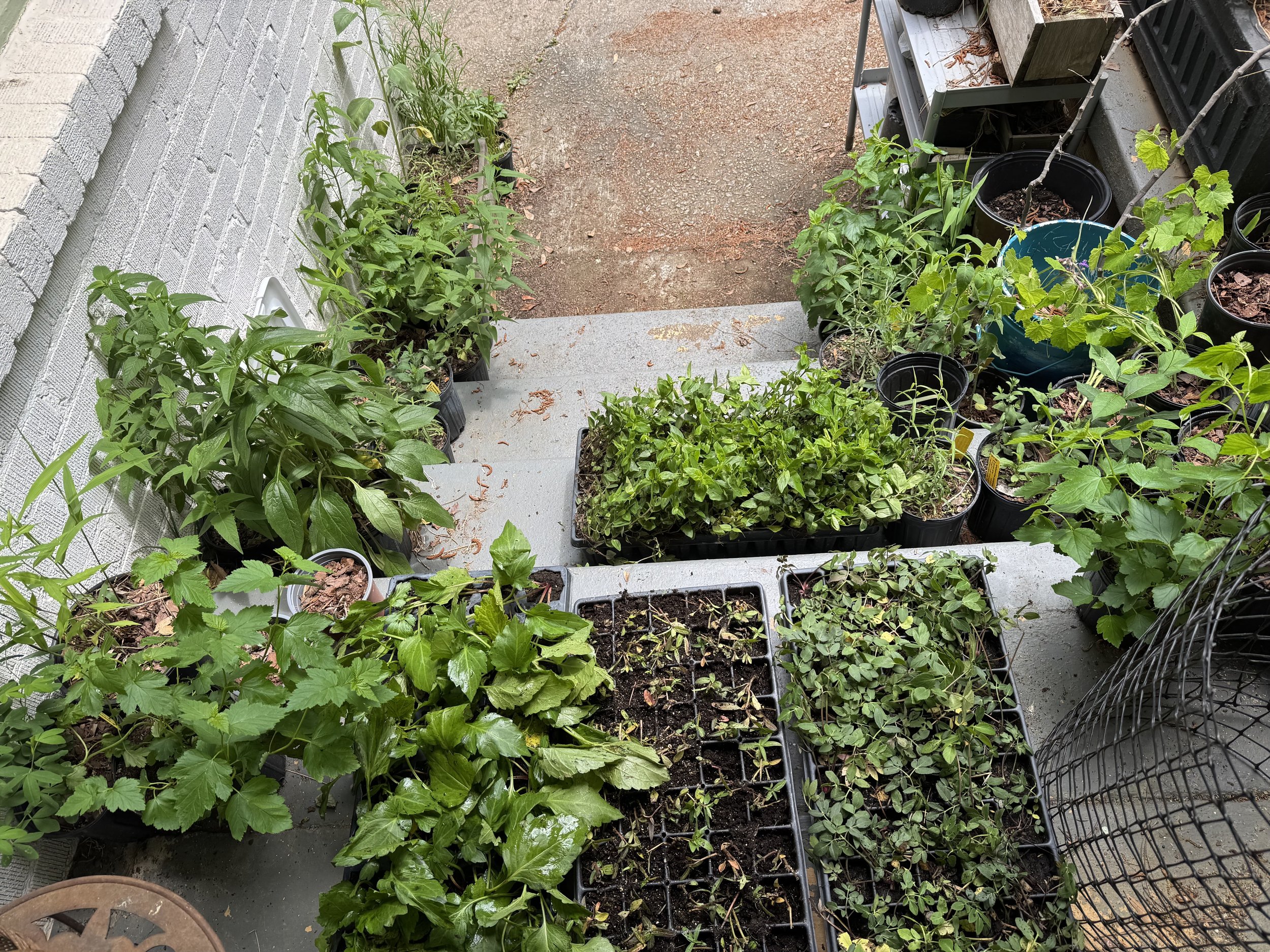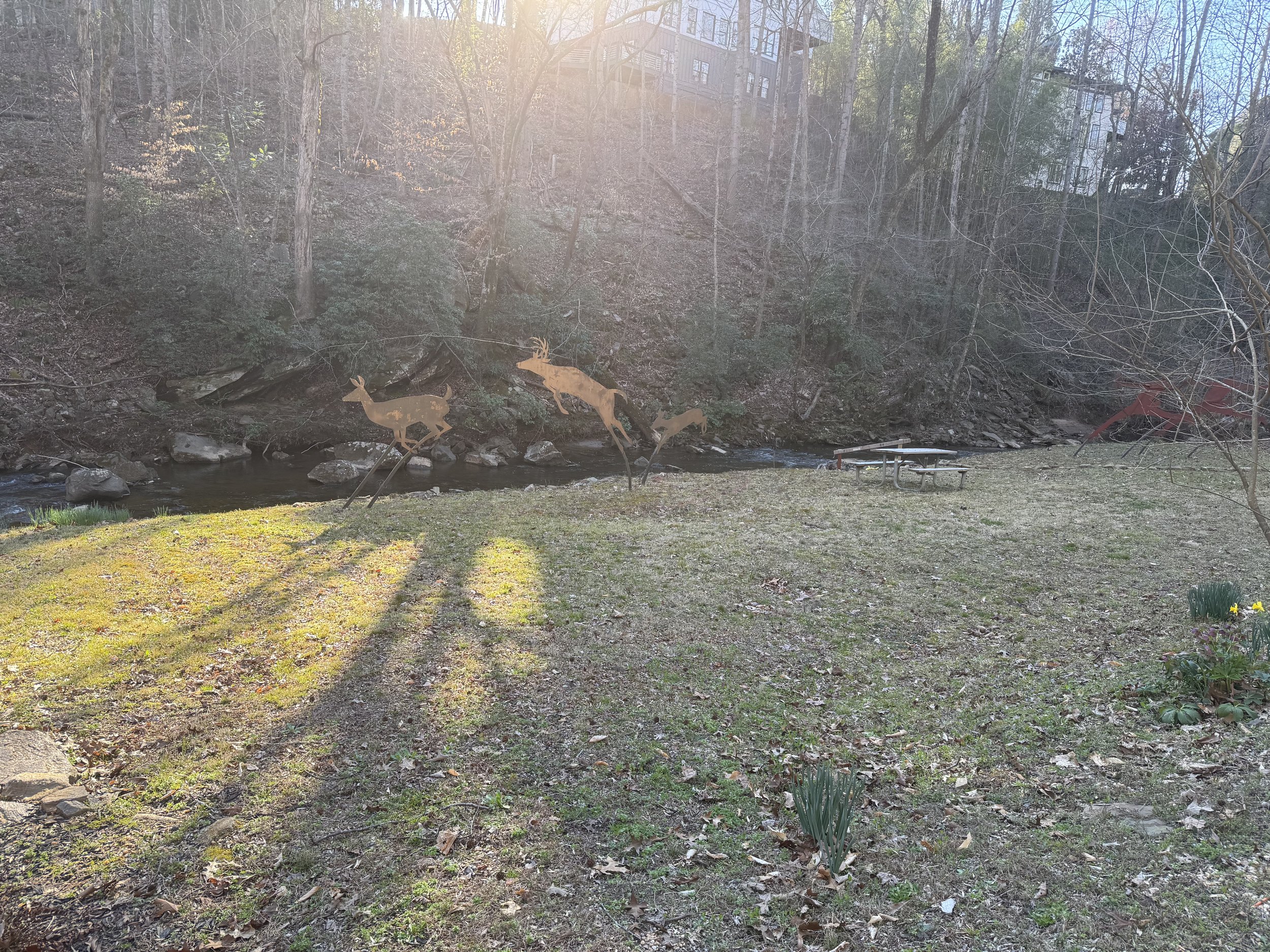
Immense gratitude is due for the opportunity to work on this beautiful land, way up in the burbs. My commute to get to the site is long. After driving on a couple highways and through what feels like endless stripmalls and parking lots, a road narrows as it winds around subdivisions and shaded curves and up and down hills. Eventually, there is a small bridge that crosses a creek. A long driveway flanks the base of a woodland slope populated by big leaf magnolias, beeches, and painted buckeyes and overlooks the wide, shallow creek. It is a gorgeous place already, but there is still wildlife, water, and land to support and natural beauty that can be augmented with careful placement of natives.
Since February, I’ve put over 600 plants into this ground – 40 species of shrubs and perennials. Grasses and sedges comprise 60% of plant quantity. There is now habitat cover where there wasn’t. There are host plants for so many butterflies and moths, including Monarchs, skippers, duskywings, hairstreaks, the list goes on. There are sources of food via nectar, pollen, and berries for the growing season, with the potential to feed a diverse array of long- and short-tongued bees, beetles, butterflies, moths, hummingbirds, songbirds, and small mammals. It doesn’t look like much yet, as new plantings go, but the coming years will bring something really special.
There are separate planting beds connected by some continuity of species, each with distinct conditions and, therefore, character. At the entrance, recent construction yielded yards of rocky fill dirt needed to be planted. These are planted primarily with shrubs that are at home on rocky slopes, ravines, and creeksides with attention to the flow of water off the road and towards the creek. Closer to the driveway, there are perennials that thrive in poor, rocky soils. I took liberties with a couple of adaptive species that love to spread out, too. All in drifts of color and texture.
Amorpha fruticosa, endearingly called Bastard Indigo Bush, is an underutilized shrub, at least to me. Its pinnate, round, blue-tinted leaves are so charming. Its flowers are deeply purple with golden pollen accents. They were blooming when I planted them, and immediately after planting, I saw them visited by a couple species of bees as I was watering. They form thickets and can handle rocky soil and some annual pruning if density is desired, and it is. Ninebark sits on the opposite side of the shrub planting here, one the steep slope from the street and above the culvert. Virginia Sweetspire is also planted in the large bed to help prevent erosion from water running off the street and driveway. It’s one of my favorites to plant in a mass.
The creekbed that runs along the property has been expanding over the years due to erosion, so species selection in the planting beds that sit against it heeds stabilization along with a desire for billowing grasses, lush greenery, and some floral interest. Both beds sit beneath rusted metal sculptures, and the plants are designed to play with those structures. The first visible bed from the driveway, under the leaping deer sculpture, contains species that colonize towards the creek, like flag irises and horsetail, and slender woodoats are on the bank to help hold it in place. There are masses of native sedges close to the creek access in both beds, and masses of golden Alexander and swamp milkweed on the lawn side of the beds. The rear bed utilizes more height. Cardinal flower sits beneath the sculptures and in front of masses of cutleaf coneflower. Behind that is a mass of redtop panicgrass, and at the very back is a mass of river oats.
The lawn outside of the beds is staying. It’s what I’d call a “natural lawn,” not turf grass, but a mix of sedges, lyreleaf sage, violets, and moss that gets mowed and I think that’s fine. Aside from mowing, it requires no fertilizer, no seeding. And it feels good to walk on. We’ve decreased the size of the lawn through the sculpture beds, and will hopefully continue to add plants to its edges, shrinking it further.
It would take hours to list the number of species that will feed off of these plants or have potential homes with them. I’m just looking forward to seeing them arrive over time. It is such a privilege to be able to do work that helps to generate biodiversity.
